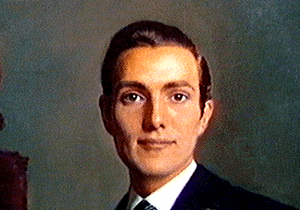 The picture of Dorian
Gray
The picture of Dorian
Gray The picture of Dorian
Gray
The picture of Dorian
Gray
(cfr. Spiazzi,Tavella, Only Connect, Bologna, Zanichelli, 1997, p. 701)
Plot
Dorian Gray is a young man whose beauty fascinates a painter, Basil Hallward, who decides to portray him. While the young man’s desires are satisfied, including that of eternal youth, the signs of age, experience and vice appear on the portrait. Dorian lives only for pleasure, making use of everybody and letting people die because of his insensitivity. When the painter sees the corrupted image of the portrait, Dorian kills him. Later Dorian wants to free himself of the portrait, witness to his spiritua1 corruption, and stabs it, but he mysteriously kills himself. In the very moment of death the picture returns to its original purity, and Dorian’s face becomes "withered, wrinkled, and loathsome" .
Narrative technique
This story is told by an unobtrusive third-person narrator; the perspective adopted is internal, and this allows a process of identification between the reader and the character. The settings are vividly described with words appealing to the senses, the characters reveal themselves through what they say or what other people say of them, according to a technique which is typical of drama.
The typical dandy
Dorian is the protagonist, the typical dandy, who thinks man should live his life in full, realizing his wishes and his dreams; if one checks one’s impulses, life is marred because every repressed impulse and all self-denial remain in one’s mind and poisons it. Dorian believes youth is synonymous with beauty and happiness.
Allegorical meaning
This story is profoundly allegorical; it is a 19th-century version of the myth of Faust the story of a man who sells his soul to the devil so that all his desires might be satisfied. This soul becomes the picture, which records the signs of experience, the corruption, the horror and the sins concealed under the mask of Dorian’s timeless beauty. The picture is not an autonomous self: it stands for the dark side of Dorian’s personality, his double, which he tries to forget by locking the picture in a room.
The moral of this novel is that every excess must be punished and reality cannot be escaped; when Dorian destroys the picture, he cannot avoid the punishment for all his sins, that is, death. The horrible, corrupting picture could be seen as a symbol of the immorality and bad conscience of the Victorian middle class, while Dorian and his pure, innocent appearance are symbols of bourgeois hypocrisy. Finally the picture, restored to its original beauty, illustrates Wilde’s theories of art: art survives people, art is eternal.